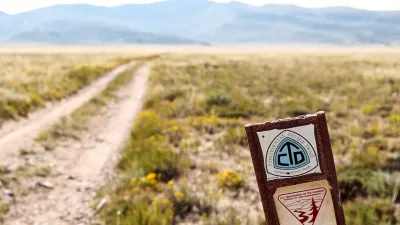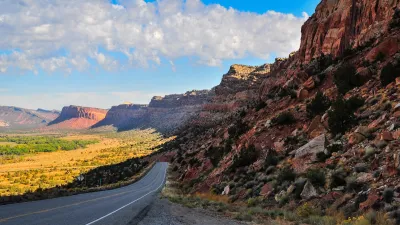If enacted, the conservative plan could ‘decimate’ public lands and protected habitats.

Writing in Colorado Newsline, David Lien assesses the potential impacts of Project 2025 on public lands. The plan, a conservative proposal to reform government at the highest levels that could affect everything from executive power to housing policy, proposes several changes to the Department of the Interior that, Lien writes, “would decimate public lands habitat” in Colorado and other states.
Proposed changes in the Interior section, which was written by former Bureau of Land Management (BLM) chief under Trump William Perry Pendley, include: restoring mining claims and oil and gas leases in Colorado’s Thompson Divide, aiming to reduce national monument designations, repealing the Antiquities Act, and giving more regulatory power to states.
According to Lien, “Every Colorado Parks and Wildlife district wildlife manager I talk to emphasizes that the proliferation of motorized and mechanized trails (legal and illegal) is negatively impacting elk herds.” In an earlier commentary, Lien writes, “During his three-plus years in the White House, Donald Trump has orchestrated the largest reduction of protected public lands in U.S. history, according to a study published in Science, an academic journal … The Trump administration has worked to weaken safeguards for nearly 35 million acres — nearly 1,000 times more than the administration has protected.”
FULL STORY: Project 2025 puts public lands in peril

Alabama: Trump Terminates Settlements for Black Communities Harmed By Raw Sewage
Trump deemed the landmark civil rights agreement “illegal DEI and environmental justice policy.”

Planetizen Federal Action Tracker
A weekly monitor of how Trump’s orders and actions are impacting planners and planning in America.

The 120 Year Old Tiny Home Villages That Sheltered San Francisco’s Earthquake Refugees
More than a century ago, San Francisco mobilized to house thousands of residents displaced by the 1906 earthquake. Could their strategy offer a model for the present?

LA’s Tree Emergency Goes Beyond Vandalism
After a vandal destroyed dozens of downtown LA trees, Mayor Karen Bass vowed to replace them. Days later, she slashed the city’s tree budget.

Sacramento Leads Nation With Bus-Mounted Bike Lane Enforcement Cameras
The city is the first to use its bus-mounted traffic enforcement system to cite drivers who park or drive in bike lanes.

Seattle Voters Approve Social Housing Referendum
Voters approved a corporate tax to fund the city’s housing authority despite an opposition campaign funded by Amazon and Microsoft.
Urban Design for Planners 1: Software Tools
This six-course series explores essential urban design concepts using open source software and equips planners with the tools they need to participate fully in the urban design process.
Planning for Universal Design
Learn the tools for implementing Universal Design in planning regulations.
Ada County Highway District
Clanton & Associates, Inc.
Jessamine County Fiscal Court
Institute for Housing and Urban Development Studies (IHS)
City of Grandview
Harvard GSD Executive Education
Toledo-Lucas County Plan Commissions
Salt Lake City
NYU Wagner Graduate School of Public Service





























